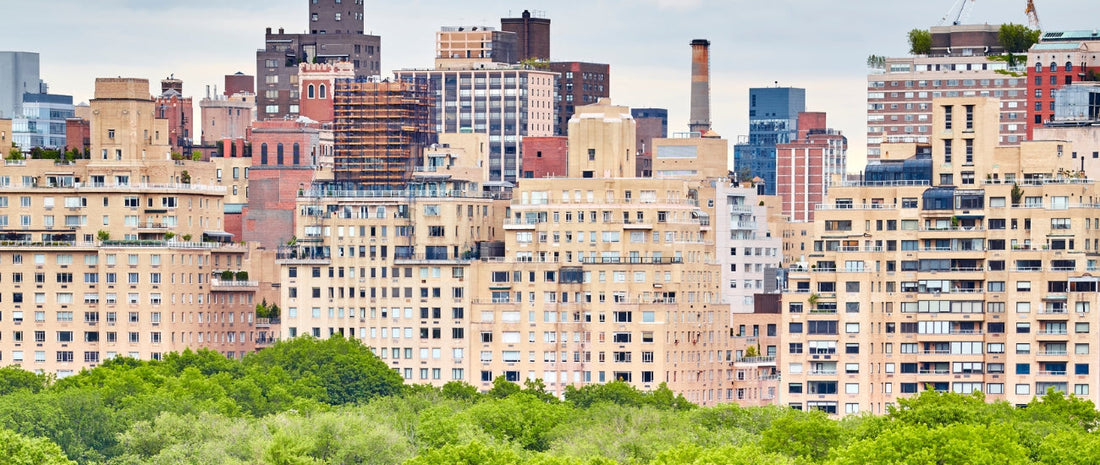We often associate New York with the term “concrete jungle”. With its buildings sky-high and abundant, it’s easy to skip past the underlying beauty that’s blooming in all cities. Urban floriculture helps green cities by blending plant life into everyday urban spaces.
From rooftop gardens to community flower beds, spreading and growing decorative plants in city settings isn't just about beauty. It's about sustainability, health, and creating a better environment for everyone.
What Is Floriculture?
Floriculture refers to the use of flowering plants and ornamental greens, typically for decorative use. In simple terms, it’s gardening that dresses up the city with petals and leaves.
When floriculture starts to make its way to urban environments like cities, it becomes urban floriculture: a creative and eco-conscious way to bring nature into city life. Things like vertical gardens on office walls, potted plants lining sidewalks, flower arrangements from a local florist, or pollinator-friendly patches in public parks. Again, they’re not just there for show. While they are beautiful, they’re placed in cities to make urban living sustainable.

Floriculture's Role in Sustainable Cities
To dive deeper into what exactly floriculture does for a city, we’ve compiled a list of 3 major advantages that floriculture brings to urban environments.
Reduces Urban Heat Islands
One powerful way urban floriculture helps green cities is by reducing the urban heat island effect. This effect describes the phenomenon where cities tend to trap heat due to concrete, asphalt, and limited green space, causing higher temperatures.
Flowering plants, green walls, and rooftop gardens help cool the air through shade and transpiration, which is a process where plants release moisture, naturally lowering surrounding temperatures.
This reduces the need for air conditioning, lowers energy use, and makes city life more comfortable and sustainable.
Supports Biodiversity
Cities may seem lifeless, but with thoughtful planting of native flowers and shrubs, they can become homes for bees, butterflies, and birds. As cities become more dense with urbanization, we may find that these critters are unable to do their job. By providing these dedicated urban floriculture areas for these critters and birds, we’re contributing to the bigger goal of sustainability.
Enhances Mental Well-being
Many studies have proven that exposure to green spaces reduces stress and boosts mood. It’s shown to reduce blood pressure and improve memory and concentration, which contributes to the general mood of a person. For a more detailed explanation, check out our blog on the positive benefits of flowers on mental health.
By weaving floral elements into streetscapes, plazas, and buildings, cities offer residents small but meaningful moments of calm and connection to nature, even in the middle of a bustling atmosphere.

Urban Floriculture in Real Life
Around the world, cities are embracing urban floriculture to help green cities through innovative projects:
The High Line, New York City
This is an elevated linear park (a long, narrow green space) built on a former railway track that uses regionally appropriate flora to create stunning scenery in Manhattan. It not only beautifies the area but also provides habitat for wildlife and a peaceful retreat for locals.
Bosco Verticale, Milan
These two residential towers are covered in over 900 trees and thousands of shrubs and floral plants. The concept merges architecture with vegetation to reduce heat and support biodiversity. It’s a jaw-dropping sight that will take your breath away.
Skyrise Greenery Initiative, Singapore
While it’s not a single build or project, Singapore encourages buildings to integrate green roofs, walls, and terraces through incentives and policies. The result? Cooler microclimates, reduced energy use, and an overall greener cityscape.
These examples show how urban floriculture helps green cities by turning underutilized spaces into thriving natural environments.

Pretty in the City
From cleaner air to happier people, urban floriculture helps green cities in subtle ways. As cities grow, so does the need for smart, beautiful solutions that benefit both people and the planet. Whether it’s a planter box outside a café or a full-scale green wall, every bloom plays a part in making urban life more livable and more colorful.

